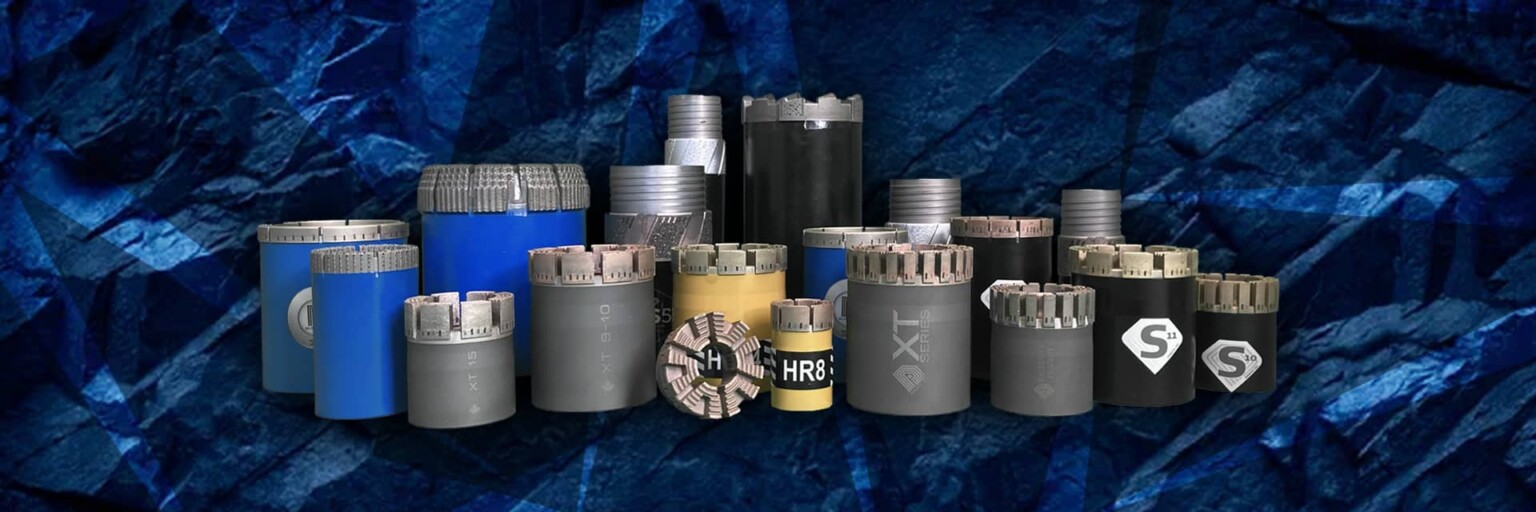
The information contained in this section is provided as a basic technical guide for the field application of Dimatec core drilling bits. To use these products successfully, it is necessary for the driller to provide some control over the three primary operating parameters which are:
The data provided here is intended as a basic guideline for the selection of the appropriate tools for your job and the normal operating requirements for their application. As drilling conditions and the capabilities of drilling equipment vary considerably from site to site, it is impossible to define absolute application recommendations. Some experimentation on the part of the user may be required as operating parameter values outside of the ranges suggested here may be applicable to your particular conditions. Technical support is available by contacting Dimatec directly.
When drilling with diamond impregnated core bits, the lowest possible bit load or “weight-on-bit” (WOB) should be applied that will provide a satisfactory rate of penetration. Bit load is a function of both the matrix type as well as the bit face bearing area, that is, the actual contact area of the bit face with the formation being drilled. In the case of softer matrices such as XT13 or XT15, a high bit load is unnecessary as it will cause the metal-bond matrix to abrade at a high rate and/or smear, resulting in premature consumption and low bit life. Harder matrices such as S3 and S6 are more receptive to higher bit loads.
Click here to view or download the recommended operating parameters for bit load for diamond impregnated core bits in .pdf format.
Diamond impregnated core bits are widely used to drill harder, consolidated formations. The primary cutting mechanism by which they operate is known as stress crack propagation. This mechanism occurs when the compressive strength of the formation is high and the static load applied to each diamond crystal is insufficient to cause significant immediate penetration of the rock. Fracturing is induced by stress relaxation in the diamond’s track resulting from the rotation of the bit after the diamond has passed over it. This causes a series of cracks to form in the rock. When a particular diamond track is extensively fractured, the debris is carried away by the rotation of the bit. Each time a diamond passes over a certain track, further subsurface damage is caused in the formation. This allows the bit to advance through the formation.
Diamond impregnated bits have the lowest degree of cutter exposure when compared to the other types of cutting media that are used on rotary drill bits. As such, it is possible to apply relatively high rotational speeds.
A peripheral speed of 2.7 to 4.7 meters/second (9 to 15.5 feet/second) measured on the outside diameter of the bit crown will often provide an acceptable rate of penetration (ROP). A higher peripheral speed will frequently yield a higher ROP. However, higher peripheral speeds often reduce the rate of wear on the bit’s matrix layer – not allowing new layers of synthetic diamond to become exposed thus causing the original layers of diamond to become flat and polished. Conversely, a lower than recommended peripheral speed will cause the bit’s matrix layer to abrade more readily, particularly under higher bit loads. This may result in the premature failure of the bit crown.
Click here to view or download the recommended operating parameters for rotational speed for diamond impregnated core bits in .pdf format.
All diamond impregnated bits require the use of circulating fluid during normal operation. The circulating fluid has several functions that include:
Click here to to view or download the recommended operating parameters for bit hydraulics for diamond impregnated core bits in .pdf format.